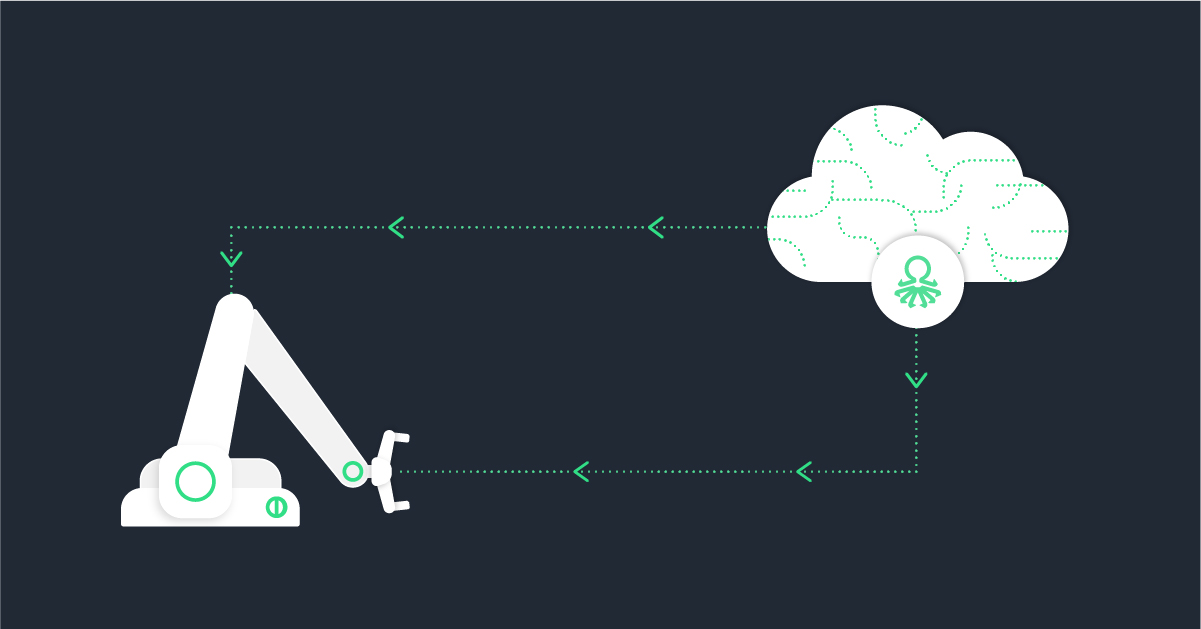Overall Equipment Efficiency in an Industry 4.0 World
Manufacturing is an important aspect of our modern world, serving as the foundation of many economies around the world. With the advent of Industry 4.0, which is defined by the incorporation of digital technologies into the manufacturing process, manufacturers must optimize their operations for competitiveness and customer satisfaction.
For this, manufacturers must have real-time visibility into their operations in order to make informed decisions that drive efficiency and achieve the vision of Industry 4.0—smart factories with real-time monitoring and control. This is where Overall Equipment Efficiency (OEE) comes in, as it provides the data and insights required to achieve Industry 4.0 goals.
OEE is a metric that assesses the effectiveness and efficiency of equipment in a manufacturing process, taking into account factors such as availability, performance, and quality to provide real-time insight into its performance. In this blog, we’ll look at what OEE is, why it’s important, and how it can help bring Industry 4.0 to life.
Seiichi Nakajima, a Japanese industrial engineer, pioneered the concept of OEE in the 1960s. Since then, assessing and improving operational efficiency has become a common practice in many industries, including manufacturing. OEE has evolved over time, and it now plays an important role in Industry 4.0 as a means of measuring equipment efficiency and driving operational improvement.
Understanding the OEE Formula
As mentioned earlier, the OEE metric is used to evaluate the efficacy and efficiency of equipment in a manufacturing process. It is made up of the three crucial elements of availability, performance, and quality. These three factors must be determined to determine OEE, which may be done by following the methodology below.
Availability indicates the actual amount of time that the machinery is available for output, with both planned and unplanned downtime taken into consideration. Performance evaluates the equipment’s operating speed in relation to its maximum speed. And quality is defined as the percentage of good parts created when compared to the total number of components produced.
Availability
Availability is determined by comparing the actual equipment running time (after accounting for planned or unplanned downtime) to the total time the equipment was available for production, and the formula is (Equipment Operating Time / Total Time) x 100.
Performance
Next, performance is calculated by comparing the equipment’s actual operating speed to its maximum speed. Formula wise, performance is equal to (Actual Equipment Speed / Maximum Equipment Speed) x 100.
Quality
Lastly, quality is known by dividing the total number of parts created by the number of good parts produced. The formula for quality is (Good Parts Produced/Total Parts Produced) x 100.
Now, once Availability, Performance, and Quality have been calculated separately, OEE can be calculated by using the following equation: OEE = Availability x Performance x Quality.
What’s a Good vs Bad OEE?
The optimum OEE score is 100%, which occurs when a manufacturer is producing only high-quality parts at top speed and with no downtime. For the majority of firms, though, achieving this perfect score is frequently unattainable. For discrete manufacturers, a score of 85% is regarded as world-class, while a score of 100% is ideal, making it an appropriate long-term objective for many businesses. While a score of 40% or lower is thought to be low, a score of 60% is typical yet still shows room for progress.
It’s crucial to keep in mind that a strong OEE score depends on the sector and the tools being used. For instance, because to the high requirements in the business, an OEE score of 90% is regarded as extremely good in the automobile sector.
Monitoring OEE in Manufacturing
OEE is a dynamic statistic that needs to be constantly tracked and improved. Businesses can accomplish this by identifying areas for improvement, including lowering downtime or speeding up processes, and making the required changes to increase efficiency.
It’s important to realize that OEE is simply one of several metrics employed to assess the efficiency and performance of a manufacturing process. OEE should be utilized in conjunction with other indicators including machine usage, overall equipment performance, and cycle time to provide a thorough picture.
Effective OEE monitoring requires real-time observation. As a result, manufacturers can instantly gather and examine data from controllers, sensors, and edge devices. Using this data, manufacturers may make wise decisions that will enhance their operations and support 4.0 industry.
Real-time monitoring is critically dependent on the gathering and interpretation of data. Manufacturers can obtain important insights into their operations by collecting data from controllers, sensors, and edge devices. This data can be evaluated to spot problem areas, monitor equipment performance, and streamline procedures.
Manufacturers must have the right IoT equipment, as well as the right software for real-time monitoring. run-of-the-mill software solutions may not be sufficient to provide the level of analysis and insight that manufacturers need to optimize their operations. This is where AI-powered no-code platforms can provide significant benefits. These platforms use machine learning algorithms and other AI technologies to analyze data and identify patterns that can help manufacturers make data-driven decisions.
One of the key advantages of no-code platforms is that they empower subject matter experts, such as engineers or plant managers, to use the software without needing extensive programming skills. This allows these experts to quickly and easily create and deploy custom applications that are tailored to their specific needs. As a result, manufacturers can more effectively monitor their operations, identify issues in real-time, and make proactive adjustments to improve OEE.
Benefits of OEE for Manufacturers
Numerous advantages that can enhance operational effectiveness and promote corporate success come with implementing OEE as a metric in the manufacturing process. Here are some of the main advantages of OEE and examples of how they are used in various industries:
Equipment Utilization Increase:
OEE enables manufacturers to pinpoint areas where they may increase efficiency by giving them real-time visibility into the functioning of their equipment. Manufacturers may find and remove waste by monitoring and analyzing OEE data, which improves equipment usage and increases manufacturing productivity.
Better Quality and Less Waste:
Manufacturers can make adjustments that result in higher-quality products and less waste by monitoring production quality and figuring out the reasons of errors. Manufacturers may make data-driven decisions that enhance quality and decrease waste thanks to the data that OEE provides, which can be utilized to spot trends and patterns.
Higher Profitability:
OEE can assist manufacturers in enhancing operational effectiveness and reducing waste, increasing profitability. Manufacturers can find areas for efficiency improvement and make data-driven decisions that boost production productivity, lower downtime, and enhance quality by monitoring and analyzing OEE data.
More effective maintenance planning:
When manufacturers have access to real-time information regarding the operation of their machinery, they are better able to organize and prioritize the maintenance chores they must perform in order to minimize equipment failures and maximize production output.
Enhanced Client Satisfaction:
Delivering high-quality items on time and meeting delivery schedules is critical for establishing trust and long-term customer relationships. Manufacturers can increase customer satisfaction and build a positive reputation for their company by doing so, which can lead to repeat business and a loyal customer base.
Improved Decision-Making
Manufacturers can make proactive decisions rather than reactive ones thanks to real-time data access. By doing so, companies can address possible issues before they develop into larger ones, increasing overall efficiency and cutting down on waste. Making wise selections will boost output quality and productivity, which will ultimately lead to corporate success.
Vanti’s AI-powered OEE Improvement Offering
Vanti’s solution boosts OEE by combining visual defect detection, early quality prediction, and process optimization. Here’s a closer look at each of these components and how they affect OEE:
Detection of Visual Defects:
Vanti’s solution detects defects in real time by utilizing computer vision and deep learning algorithms. The system can detect defects that human inspectors may miss by analyzing images or video footage of the production line. This allows manufacturers to detect quality issues early, reducing rework and scrap and improving overall product quality.
Early Quality Forecast:
Vanti’s solution also employs machine learning algorithms to forecast the likelihood of future defects. The system can identify patterns and trends in production data that may lead to quality issues, allowing manufacturers to take proactive steps to prevent those issues before they occur. This reduces the possibility of downtime or delays due to quality issues, ultimately improving OEE.
Process Improvement:
Finally, Vanti’s solution includes process optimization capabilities that can assist manufacturers in improving their manufacturing processes. The system can identify areas for improvement by analyzing data on machine performance, production output, and other key metrics. Manufacturers can then optimize their processes for maximum efficiency and productivity, reducing downtime and improving OEE.
Vanti’s differentiation:
Vanti’s focus is on product and process health, as opposed to predictive maintenance like most other systems on the market. To review, predictive quality aims to maximize efficiency while minimizing interruptions, whereas predictive maintenance focuses on the care of tangible assets like machinery and equipment to prevent breakdowns and maximize output. In contrast, predictive quality looks at both the product and its production methods to see how well they will hold up over time. The intended outcomes of this approach higher first-pass yield and throughput, which prioritizes preventing quality concerns, enhancing product quality, and decreasing waste, rework, and recalls. Basically, predictive quality works in tandem with predictive maintenance to monitor product and process health to ensure that the entire production system is running at full efficiency.
Above all, Vanti’s solution provides a holistic method for enhancing OEE by addressing major areas of concern such visual defect identification, early quality prediction, and process optimization. Vanti’s solution uses cutting-edge technologies like computer vision, machine learning, and data analytics to aid manufacturers in real-time problem identification, data-driven decision making, and operation optimization for optimal efficiency and production.
Conclusion
OEE is a critical indicator for assessing and enhancing the effectiveness of manufacturing and production operations. Businesses can increase OEE by using Vanti’s AI services to better understand the functioning of their equipment, spot inefficiencies, and streamline their operations. OEE has a bright future as machine learning and artificial intelligence developments continue to transform the industrial sector.
The AI-powered solution offered by Vanti assist businesses reduce inefficiencies and boost efficiency by providing real-time insights into machinery and processes. Companies can stay ahead of the curve and increase their OEE with Vanti’s cutting-edge solutions. In addition to boosting productivity and efficiency, investing in OEE enhancement will benefit the bottom line and set up the business for long-term success.





